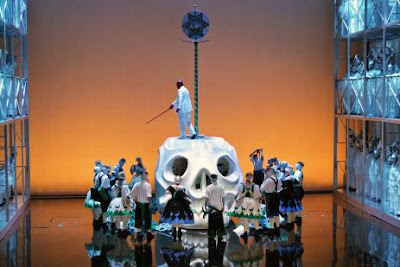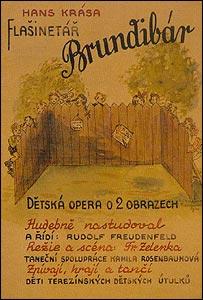Théâtre Impérial de Compiègne in Danger
New Opera Films (Ionarts, September 18, 2004) Auber's Haÿdée in Compiègne (Ionarts, December 5, 2004) |
Saint-Saëns, Henry VIII Chabrier, Une éducation manquée Meyerbeer, Dinorah Thomas, Le songe d'une nuit d'été Poulenc, La voix humaine |
This is a man still standing who is fighting for his life's work. A man whose dignity and force of spirit have always struck those who speak with him. A musical aristocrat, an artist who chose to be in the shadows. Pierre Jourdan, after long years spent near Gabriel Dussurget at the Festival d'Aix-en-Provence, had dreamed of finding a place where the « Théâtre français de la musique », whose mission since 1987 has been to make known works dropped from the repertory, could grow in peace. He rediscovered the Théâtre impérial de Compiègne and fought for it to be reopened. That was in 1991.The productions in Compiègne have featured many great French singers, some of them discovered there. Jourdan, who got started as a film director, always realized the power of film and released many DVDs of the theater's productions, in cooperation with TF1. Only a few of those DVDs are widely available anymore, sadly, as I would also love to see Darius Milhaud's Christophe Colomb or Stavros Xarhakos' Le Visiteur.
You would be stunned to rediscover this sleeping beauty now. A hall commissioned by Napoléon III of the architect Ancelet but that did not open because of the 1870 war. It is near the château, built on the very site where there was a convent, razed during the Revolution, the one in Georges Bernanos's Dialogue des Carmélites. Pierre Jourdan still remembers his first visit, when pigeons made the place their kingdom. He loves this theater with its excellent acoustic ("an empty case, wood and air"), whose wood carvings were never gilded, the walls never covered with color.
For the 2007-08 season, Pierre Jourdan was planning to concentrate on the composer he is calling « le Mozart français » -- Boieldieu. However, the budget is covered partially by the local government, only about half, with the rest coming from wealthy backers (about 45%). The Conseil général de l'Oise has announced that they will cut funding to the Compiègne theater by 35%, or 230,000 €, which was the money intended in the budget to cover the initial costs of the Boieldieu productions, Ma tante Aurore and Jean de Paris. After deciding not to cancel the productions, Jourdan has opted for concert performances.











 Master Ionarts and I read the book together a lot, and recently we have been able to revisit the music, in the world premiere recording of the Tony Kushner version, made by
Master Ionarts and I read the book together a lot, and recently we have been able to revisit the music, in the world premiere recording of the Tony Kushner version, made by  After a
After a 




















































